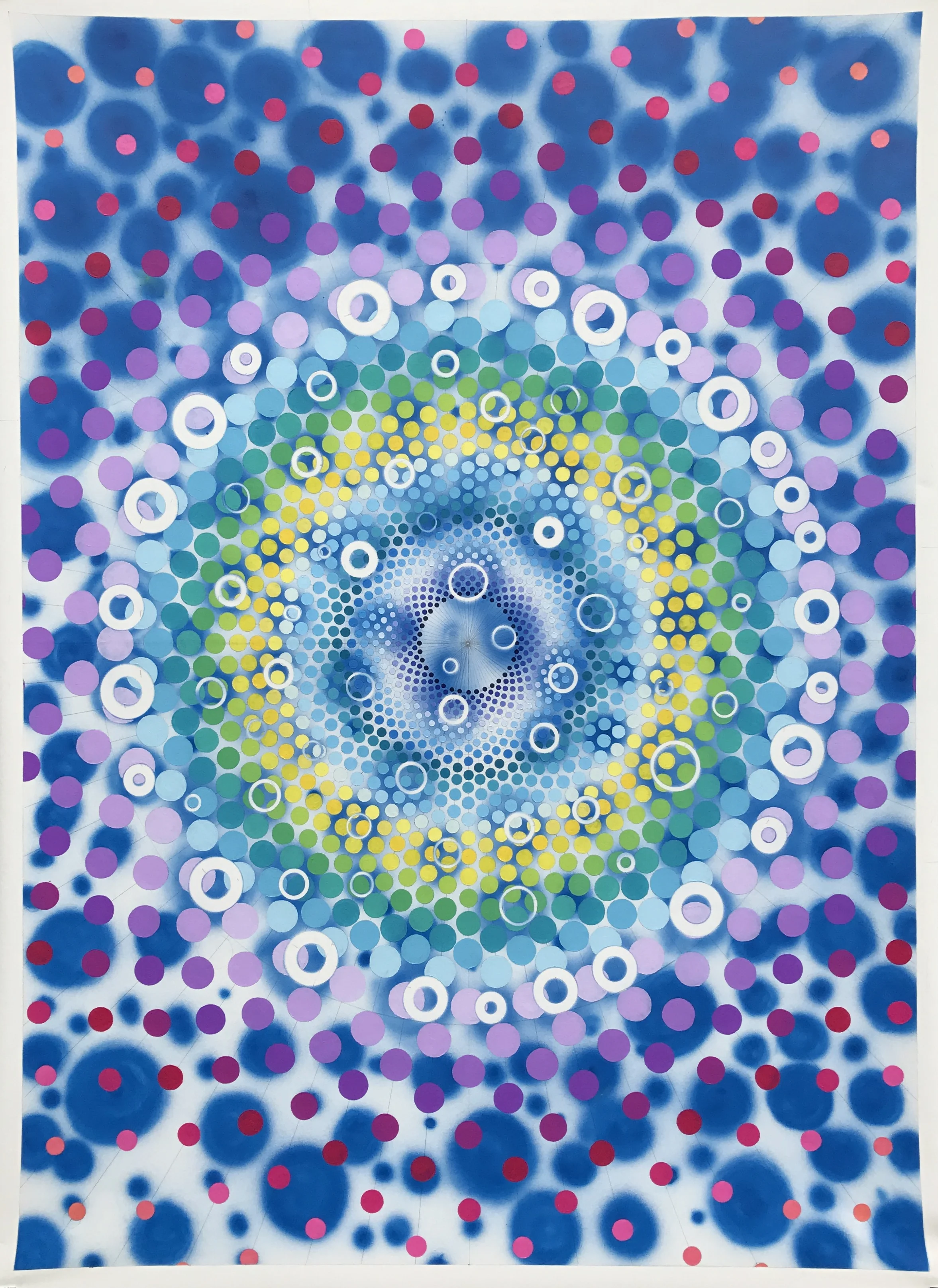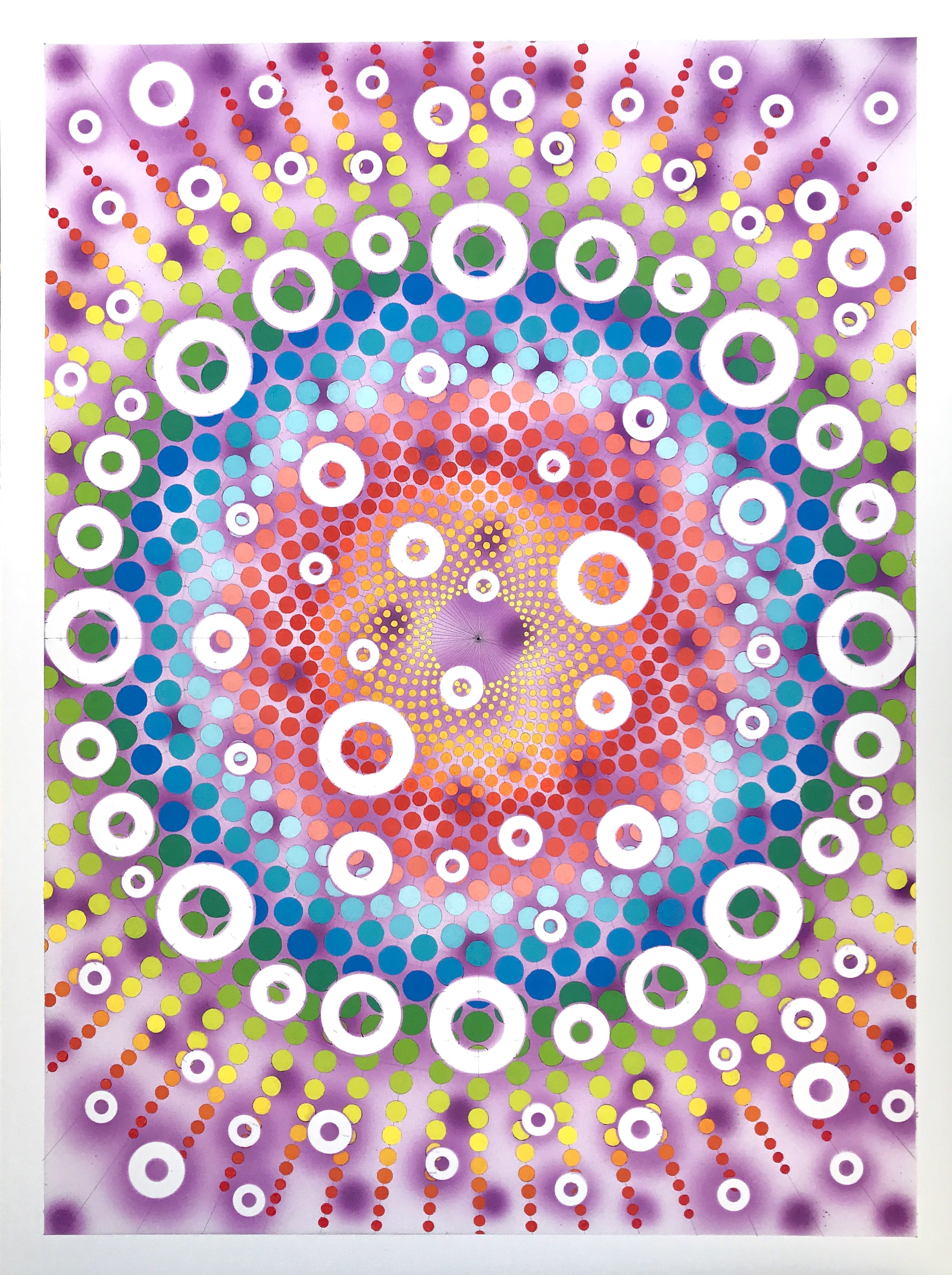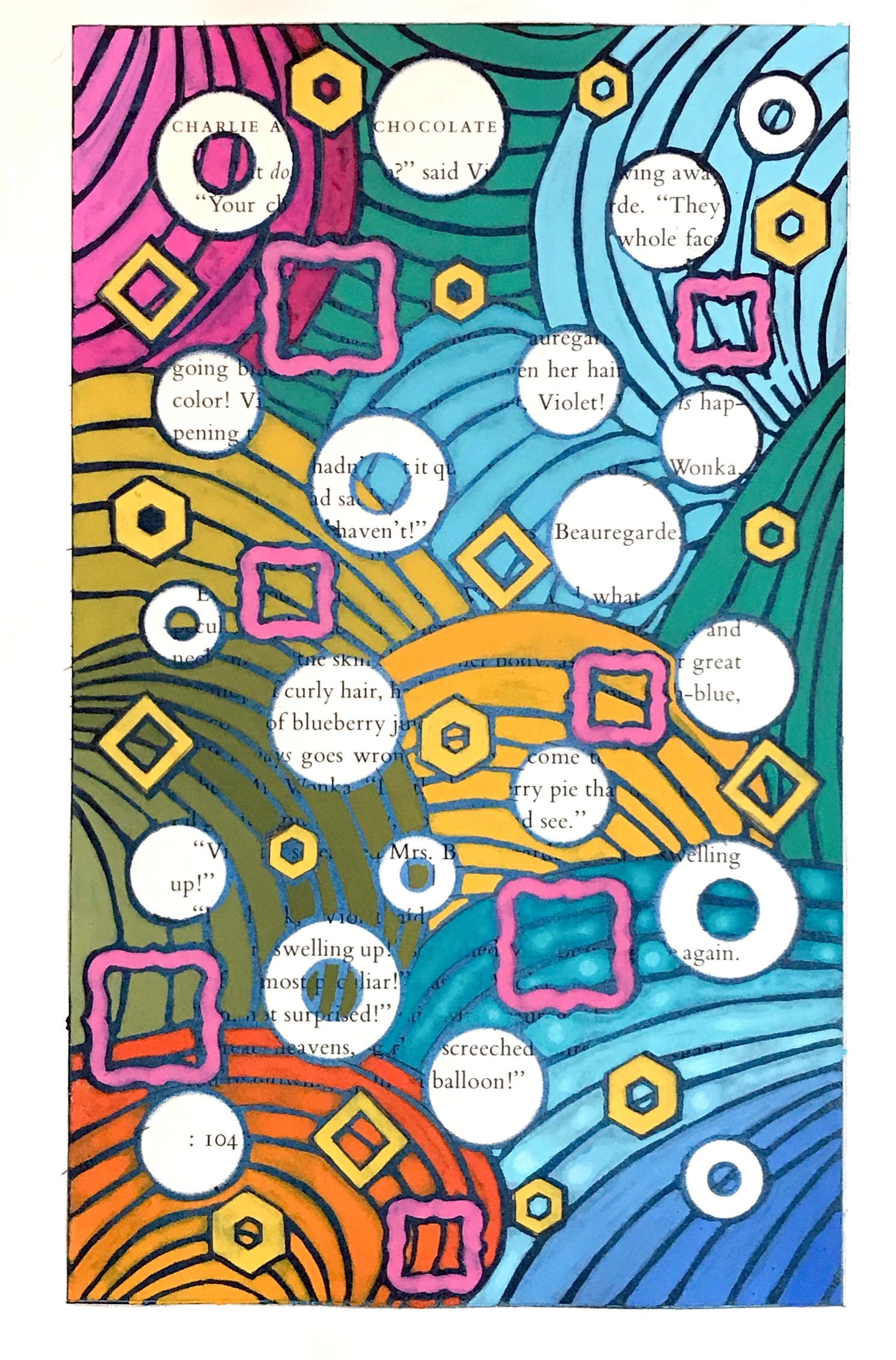“Rufo’s optical paintings—in precisely executed patterns of color and shape—have an electric, kinetic energy.”
“My work is informed by the hyper-kinetic shifts of the Op Art movement and viscous psychedelic imagery that permeated the visual landscape of my childhood in the sixties and seventies.
Parabolic spiral dot patterns are meticulously painted on an amorphous color field where vivid hues with intricate concentric elements dominate the compositions. I also make use of items such as frisket film, commercial stencils, and flat washers to create a variety of masking effects. This added layer generates a perceptual dissonance brought on by a narrow depth of field and shapes that seemingly float on the surface, when in actuality, they are brought about by unpainted portions of the background paper or canvas.
I am interested in making a body of work that appears cool and detached, but upon closer inspection is revealed to be imperfect, vulnerable, and wholly human.” — D
David Rufo was born and raised in upstate New York. He graduated from Syracuse University, where he holds a Ph.D. in Teaching and Curriculum with a specialization in Art Education. He is currently an Assistant Professor and Program Director of Education at Cazenovia College located in Madison County’s historic lakeside Village of Cazenovia. Previously, he was a Clinical Assistant Professor in the Graduate School of Education at Fordham University. David produces his art in New York City, Amagansett, and upstate New York.
Rufo’s work has appeared in group shows at the Pamela Willliams Gallery, Amagansett, NY; Folioeast, East Hampton, NY; Geras Tousignant Gallery, Palm Springs, CA; Soho House, New York, NY; Studio 10 Gallery, NOMENColorATURE, Brooklyn, NY; Smith Hall Gallery, Syracuse University, NY; and Cazenovia Art Gallery, New York, NY, among other galleries. His solo exhibitions include shows at Solomon Art Gallery, New York, NY; Robert J. Spring Gallery, New York, NY; 12 Rooms Gallery, Syracuse, NY; and Alldays Gallery, Bennington, VT. His work is included in several collections, in the U.S. and abroad.
Rufo by Jaime Lopez
ARTIST'S CAROUSEL
rotating exhibit of current & recently sold work











DAVID RUFO speaks to folioeast’s COCO MYERS
CM/ HOW DO YOU START ONE OF YOUR PAINTINGS?
DR/ 1. Pour a glass of wine. 2. Choose masking material (this year it has been coins, washers, or masking fluid). 3. Airbrush background. 4. Superimpose drawings using a compass and various templates. 5. Add dots in a parabolic pattern. 6. Fill in colors creating a mandala-like structure while listening to NPR and art podcasts. 7. Take dog outside 8. Bring dog back in. 9. Pour final glass of wine. 10. Take photo of work in progress and post to FaceBook and Instagram. 11. Fall to sleep while visualizing next steps.
CM/ HOW DOES PROXIMITY TO WATER INFLUENCE YOUR WORK?
DR/ During morning walks on the beach I love to examine the rhomboid patterns etched in the sand after the swash.
CM/ WHERE DO YOU DO YOUR WORK? IN A STUDIO SPACE? OUTSIDE?
DR/ I paint every night after dinner; this happens in a variety of locations. When at home, I set up my work on the table after dinner. When in the city, I work in my office at Fordham's Lincoln Center campus, or at the Library Hotel in midtown Manhattan. Also, we are building a house on twelve acres in upstate New York. I expect to begin incorporating the outside spaces into my art making process as well.
CM/ DO YOU FEEL INSPIRED BY THE ABSTRACT EXPRESSIONIST MOVEMENT ON THE EAST END?
DR/ Yes—de Kooning. Especially his color palette from the mid-1980s. At that time I was living in Hell's Kitchen and working as a bouncer at nightclubs around the city such as Limelight, Palladium, China Club, and the Ritz. I recall seeing de Kooning’s work from that time period and feeling that it aptly reflected both the contemporary and historic trends of the Western Art canon.
.
CM/ Do you have any works by East End artists in your home?
DR/ A signed copy of Ross Bleckner's book, My Life in the New York Times. During a studio visit I asked if he would dip his brush into a pot of silver-black paint to sign the book, which he graciously did. I am also fortunate to have a gorgeous small oil by Mark Perry that I obtained after a visit to his stunning east end home and studio.





























